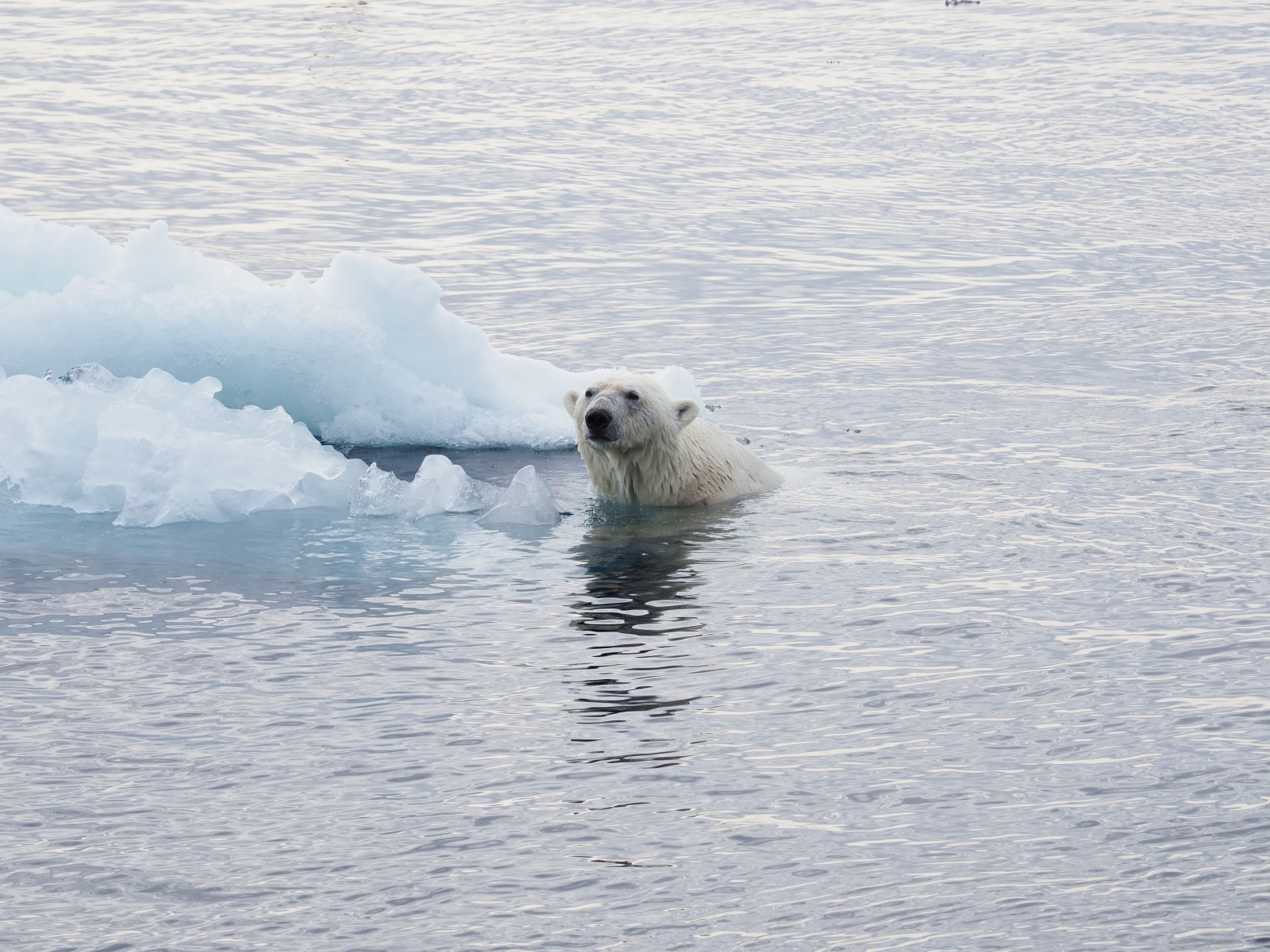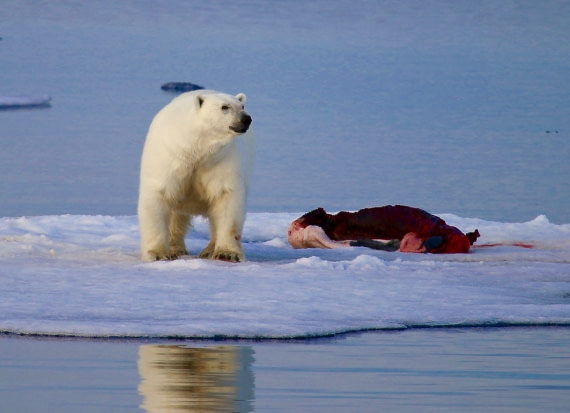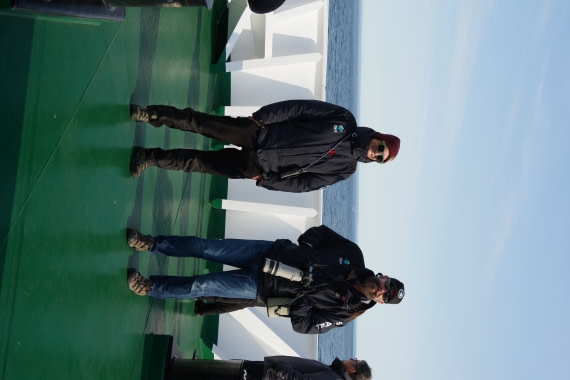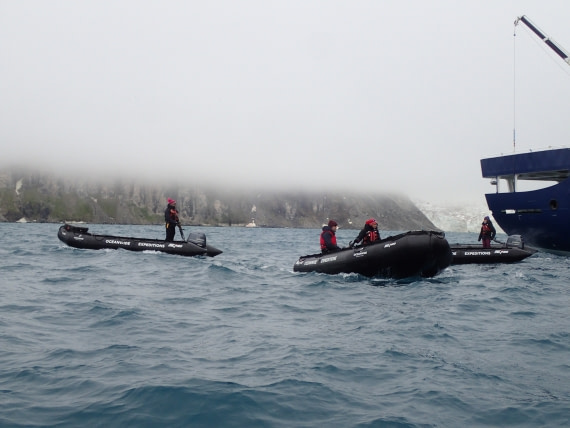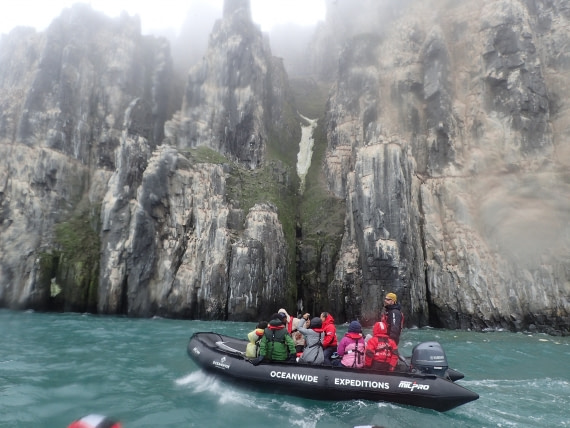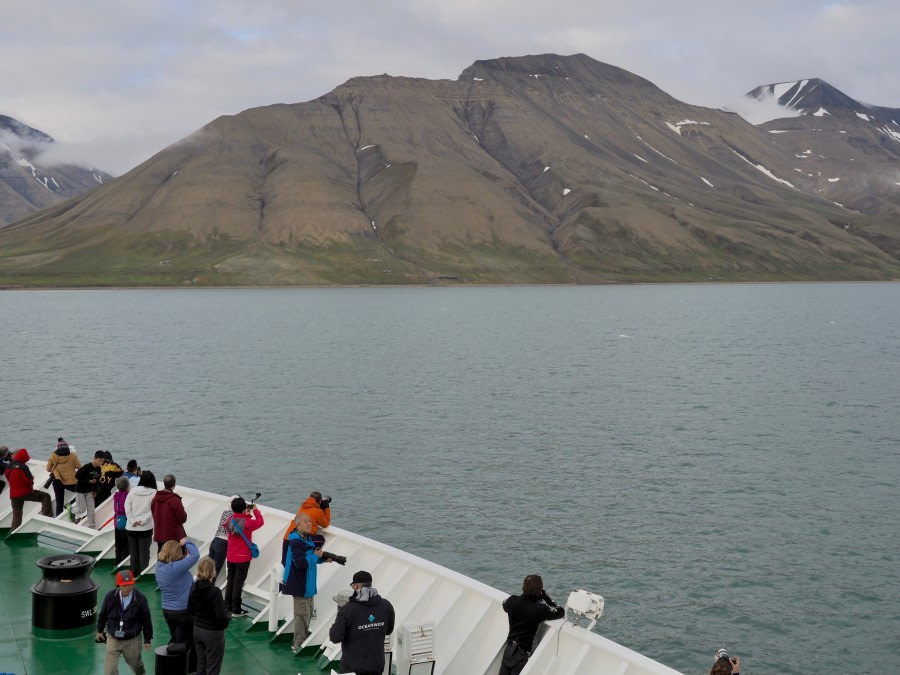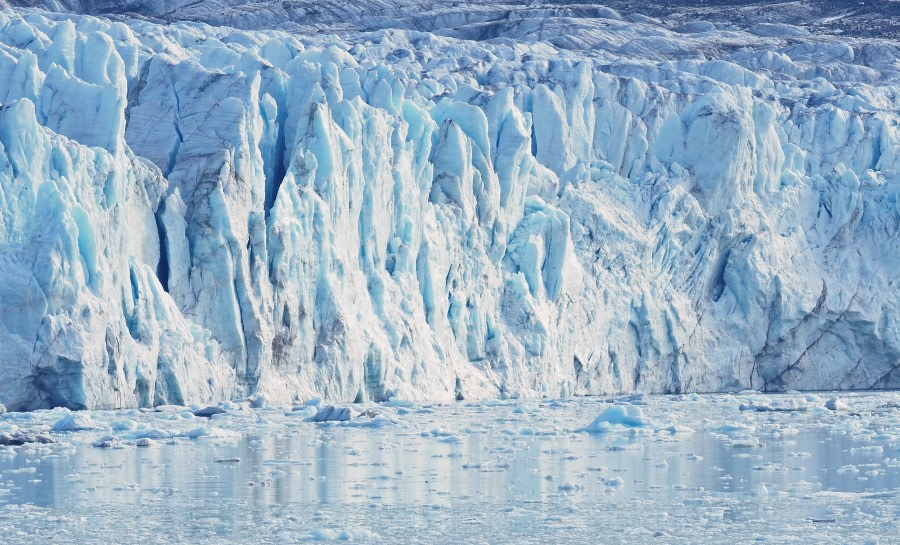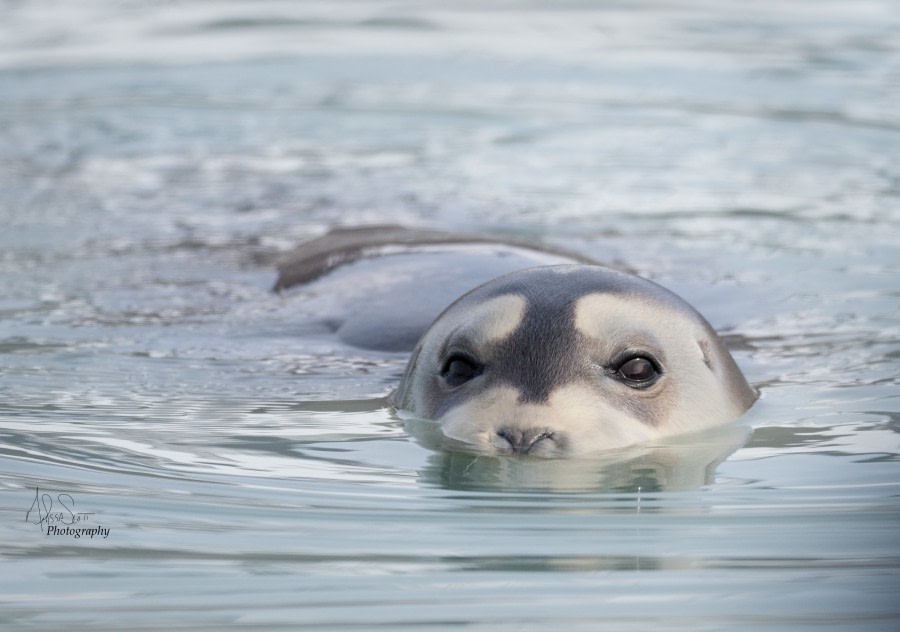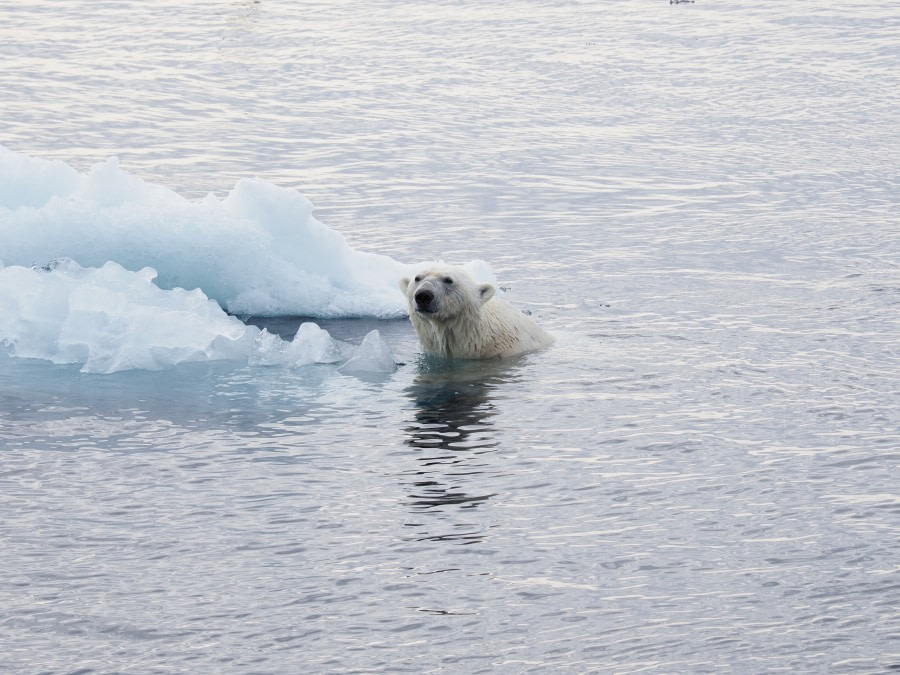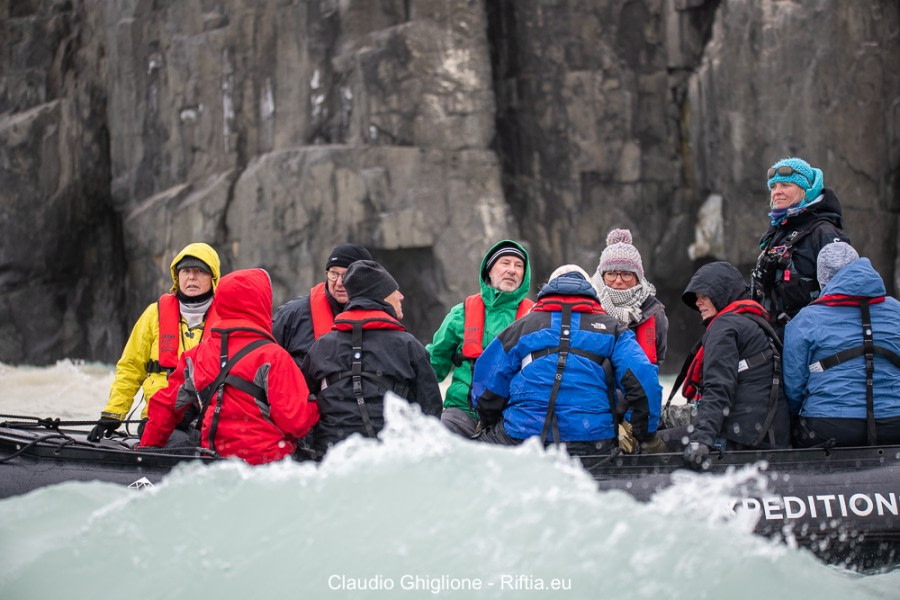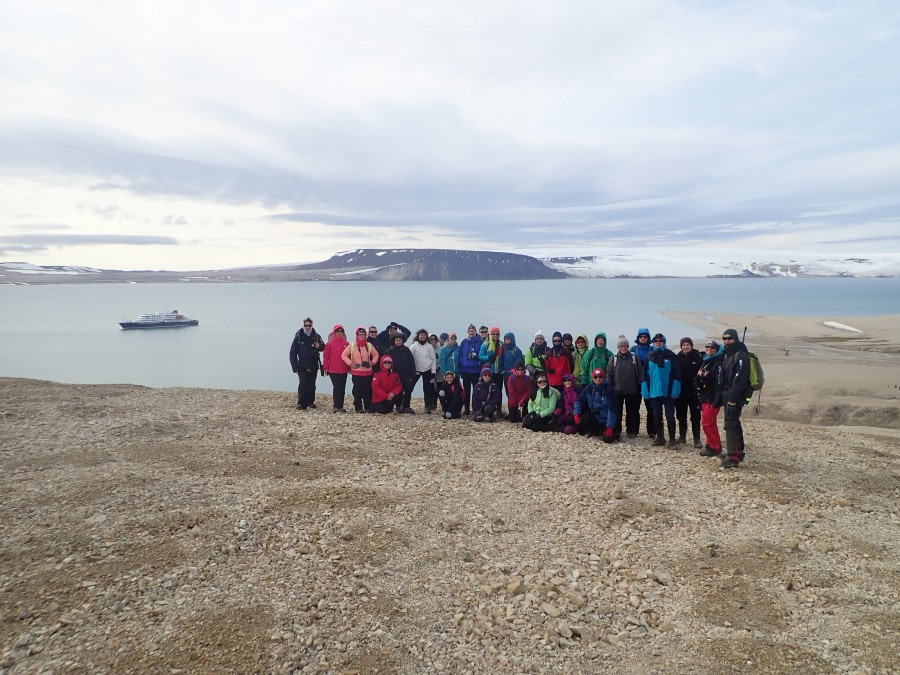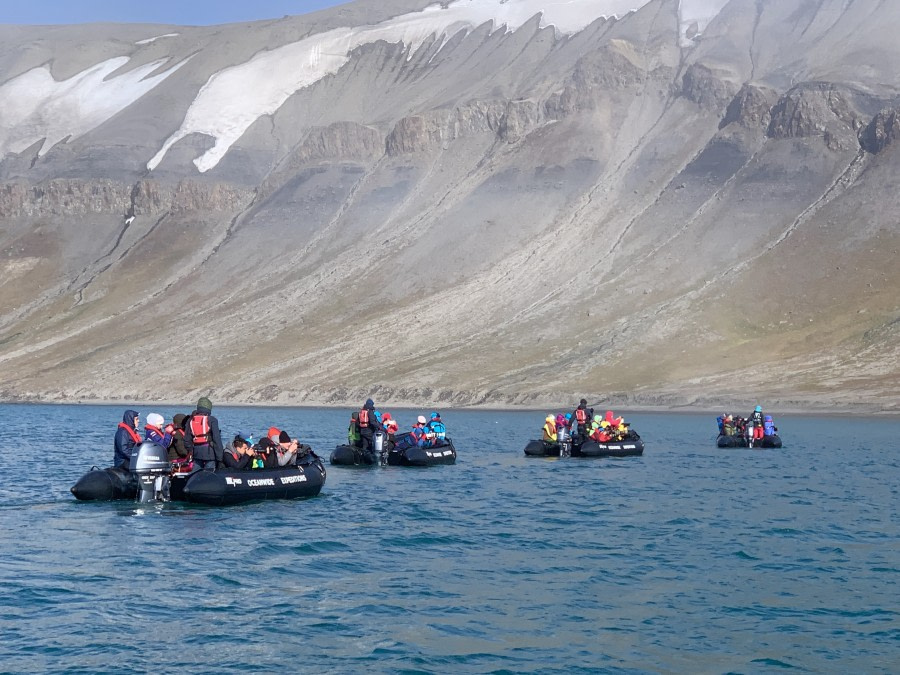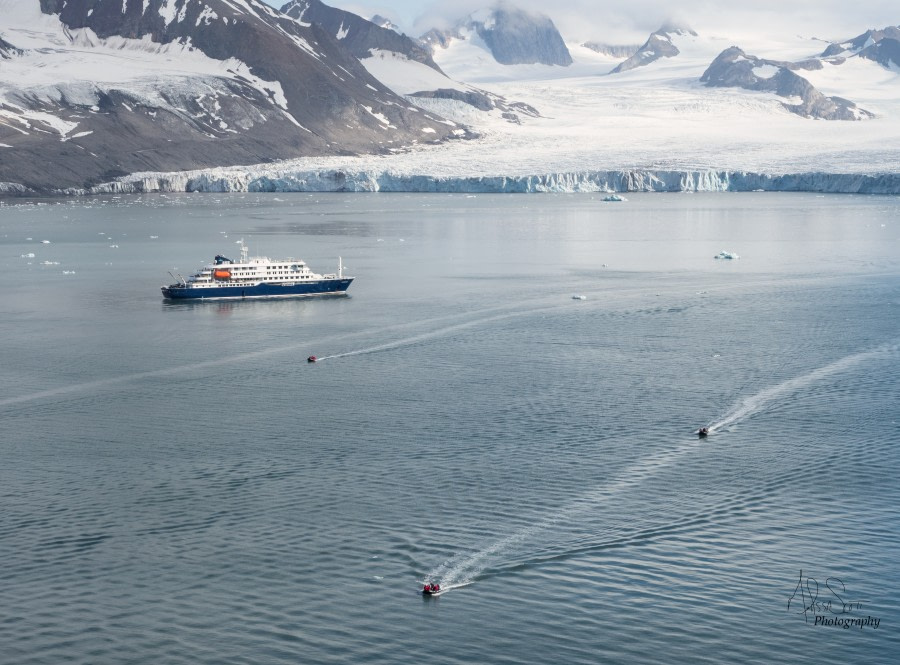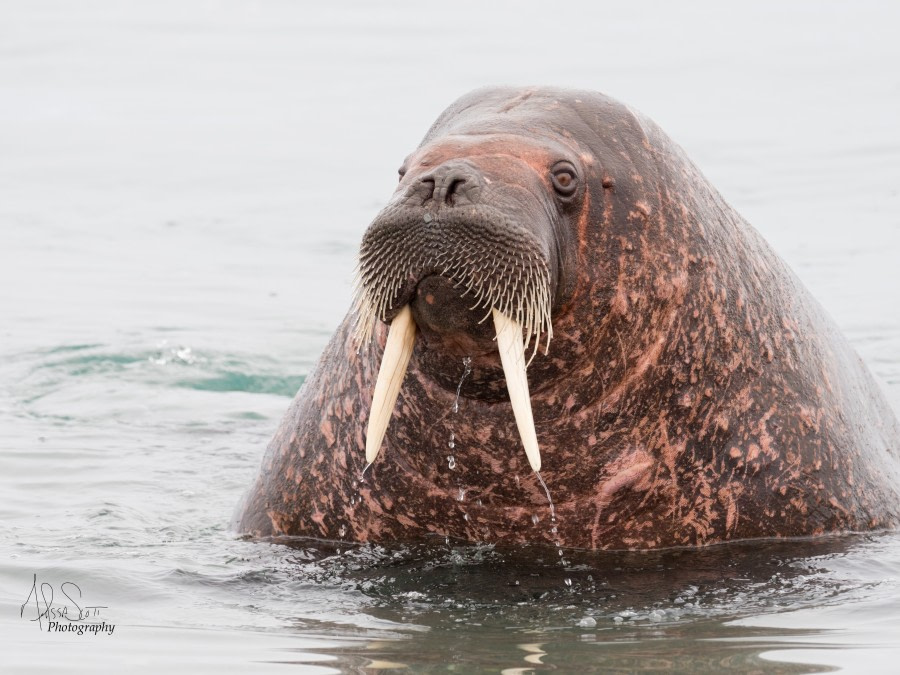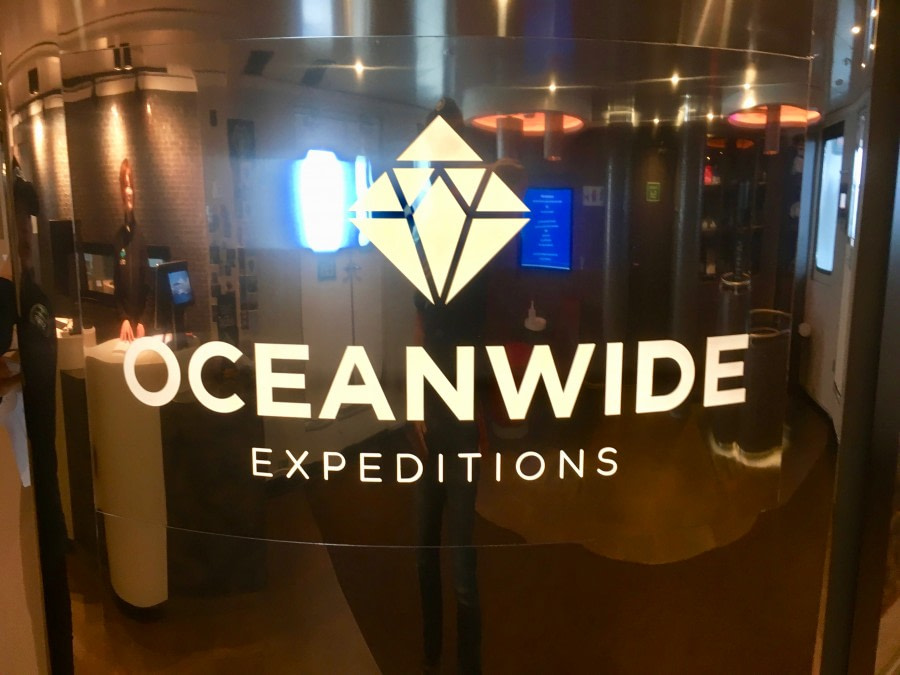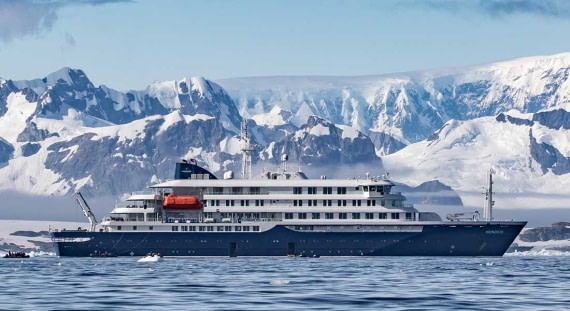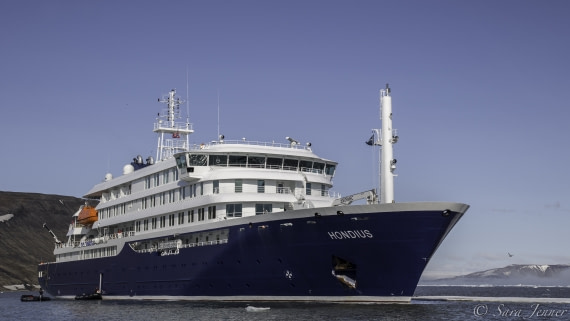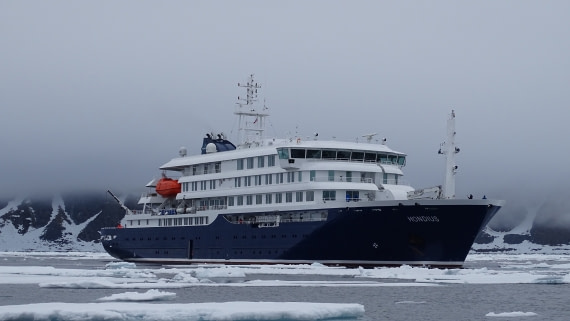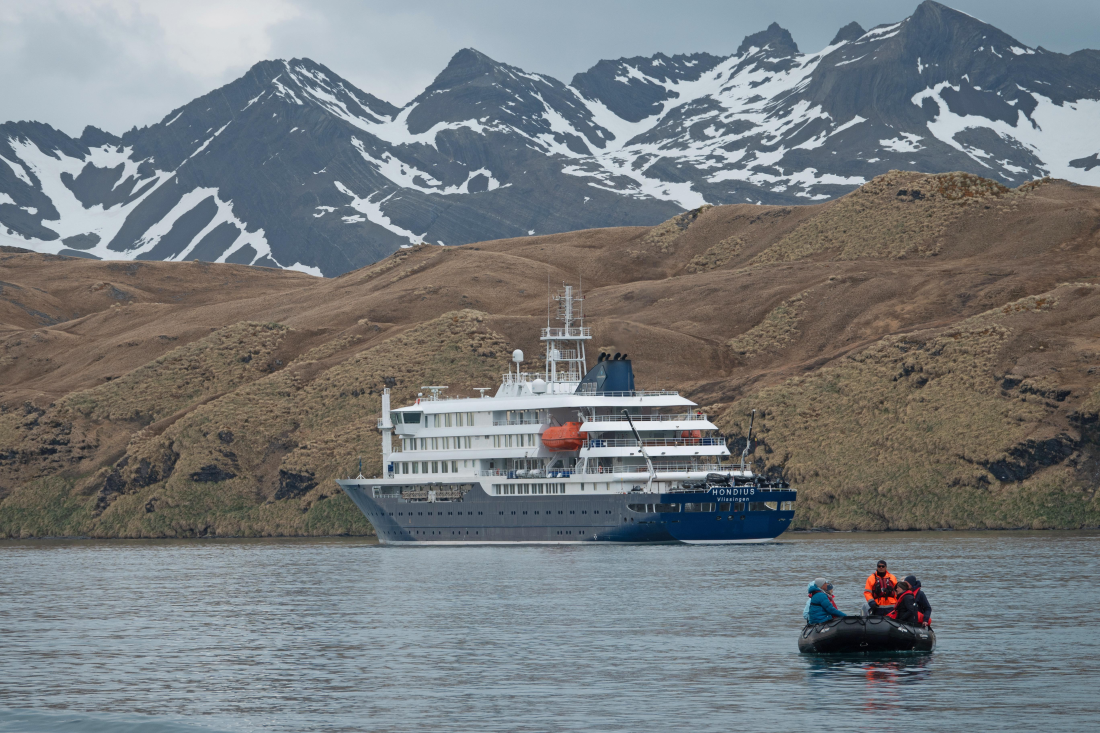| Fecha: |
29.07.2019 |
| Posición: |
78°11’.5 N, 022°05’.9 E |
| Viento: |
SSW4 |
| Clima: |
fog |
| Temperatura del Aire: |
+3 |
The day started with a bang, in fact, many bangs, and plenty of crashes too. Overnight the bridge team carefully navigated Hondius through the maze of thick sea ice in Erik Eriksenstredet; the large embayment between Nordaustlandet, Barentsøya, and Edgeøya. Some of us stayed up late, a few woke up extra early, and a really dedicated group of people stayed up the whole night, watching the world of ice go by and spotting a group of walruses hauled out on a large ice floe.
By the time of the wake-up call we found ourselves in the mirror-calm waters of Freemansundet, the narrow strait between the tabular landscapes of Barentsøya, and Edgeøya. The weather was gorgeous, the early morning sun bathed the barren desert landscape in soft yellow light, there was not a breath of wind, and it was a balmy 3°C – a beautiful summer day in the Arctic.
As we sat down to breakfast Shelli announced that there were Beluga visible quite close to the ship on the port side; we caught a couple of glimpses of these reclusive Arctic whales from the dining room windows. We headed through the strait bound for our morning destination, Kapp Lee.
As we rounded the corner into Storfjorden we found a thick bank of fog looming over the water, Hondius steamed into it and were immediately enveloped in a cold, gloomy world of swirling mist. We neared Kapp Lee, but it was obvious that conditions were not great and landing to visit the walrus would be unsafe. Instead, Florence decided to switch our plans for the day, we would head out of the fog to Sundneset, which was not far away off our stern and was still in glorious sunshine.
However, nature had one more trick up her sleeve this morning; as we steamed towards the new landing site, we heard an announcement – a polar bear had just been spotted on shore, right at the landing site! This obviously meant that we could not land here either. Instead we congregated on the bow as the officers on the bridge brought Hondius close in to the shallow shore, pushing the limits to give us a view of the bear on land.
An impromptu lecture was arranged; Pierre gave a really interesting talk about humpback whales, giving insight into these wonderful, intelligent creatures. We found out that they have recently been discovered to show empathy, not just to family members or other humpback whales, but also to other species including grey whales, seals, and even humans. We learned that there are over 100 documented cases of humpbacks protecting other species from predation by sharks and killer whales, a remarkable trait and the hallmark of a very intelligent animal.
Whilst we tucked into another sumptuous lunch, we cruised back towards Kapp Lee, hoping the weather was good enough to see the walrus. As we neared the coast we were again enveloped in thick fog, but the expedition team launched two scout zodiacs to see if the conditions on the beach were any better. After half an hour they returned with mixed news, conditions were very foggy and it would not be possible to land because of the risk of bear encounters.
However, there would be a zodiac cruise instead to see the walrus from the water. We all piled into the zodiacs at the shell doors and our drivers followed their GPS’ through the fog to the beach. As we quietly approached the shore, we could start to make out the dark mass of the mountainside looming out of the mist above us. A little closer in and we could suddenly see the beach with the shapes of the cabins, and then finally we could see the walrus!
A group of males slumbered in peace in this remote Arctic beach, digesting stomachs full of shellfish. As we got closer, we began to smell them too, the aroma of slowly fermenting seafood was pretty strong and we were glad to be in fresh air shortly after! We made several slow passes of the walrus, careful to keep our voices low and movements to a minimum, and just as we had all had a good look at them and were turning to leave several joined us in the water, lazily swimming over to check us out before exhaling and disappearing beneath the waves.
In the evening we convened for our daily briefing and the evening recap. We heard about the plans for the coming day; a day of expedition cruising in Hornsund – ‘Svalbard in a fjord’. We had the answers to several burning questions from the trip question box and then Mariela gave an interesting presentation about Walruses. This included their evolution, habitat, breeding, and their unusual feeding techniques which involve sensing clams with their vibrissae (thick bristles which they can move individually), before creating suction with their mouths to pluck the meat straight from the shell!
The evening was spent luxuriating over dinner, taking time to enjoy the views and swap stories from the trip so far as we steamed south through Storfjorden. A few of us made it to the bar for a nightcap, a nice way to end another interesting day in the high Arctic.
